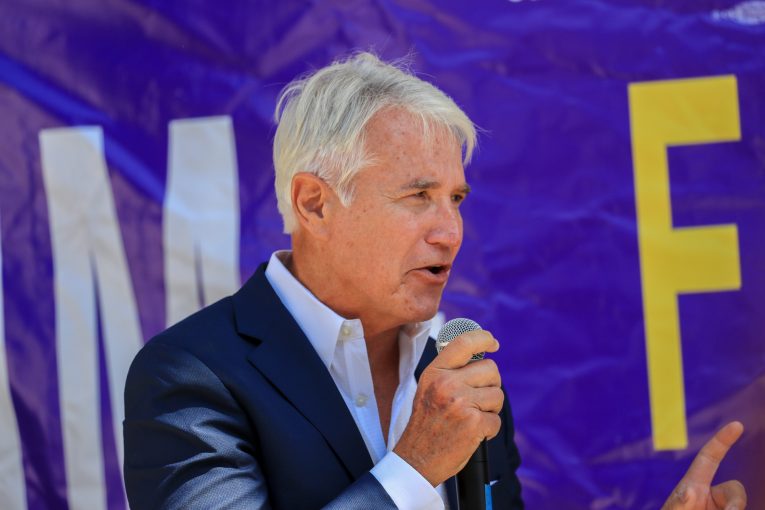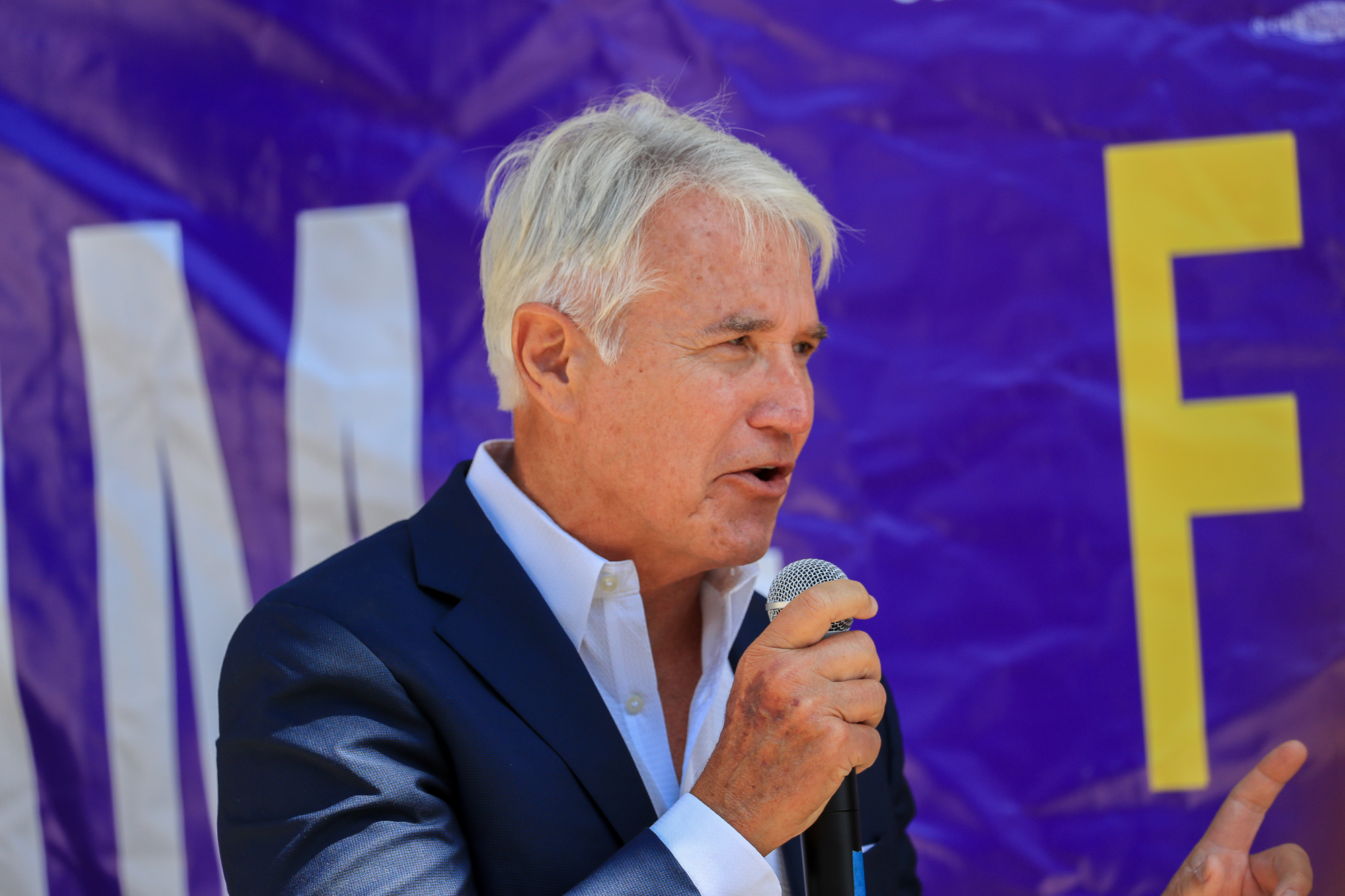

Editor’s note: In August 2022, the Vanguard published the article, “A Bombshell Report on the Failures of the Gascón Recall.” The commentary was based on a whistleblower account of the recall as reported by Jennifer Van Laar of RedState.
This week the Vanguard received an unusual retraction request for the nearly eight-month-old article.
On the original article there is an update from October 7, 2022: “Our original article reported on several assertions made by an anonymous whistleblower that concern alleged inappropriate and potentially illegal actions undertaken by Ms. Vandenberg. Ms. Vandenberg was not contacted by Jennifer Van Laar for comment or background prior to the publication of the article, and she has vehemently denied each of the whistleblower’s allegations. After thoroughly investigating the assertions presented, Salem Media Group clarifies that it has not been able to corroborate all of the whistleblower’s statements. Salem Media Group has therefore chosen to retract the whistleblower’s assertions against Ms. Vandenberg, and this article has been edited to remove those allegations. The Recall Committee and Ms. Vandenberg also deny all other allegations in the article.”
Consultant Tim Lineberger, who worked with the recall committee, told the Vanguard, “The claims made in the RedState article are demonstrably false and the giant retraction placed at the top of the story speaks for itself. More importantly, despite continued stonewalling by the Los Angeles Registrar of Voters, recall volunteers have spent nearly every day of the last seven months poring over disqualified petition signatures. Through those efforts, we have identified thousands of valid signatures that were wrongly disqualified. Once the review is complete, the Committee intends on taking legal action to seek the certification of the recall.”
The Vanguard reached out to Jennifer Van Laar who confirmed that the parent company Salem Media Group took the action of removing portions of the article, however both she and RedState “stand by our original reporting.”
She told the Vanguard, “It’s important to note that the parts that Salem ‘retracted’ are already deleted from the story, so everything that’s still written there is NOT retracted.”
After reviewing the updated RedState article, there is a single paragraph of the Vanguard’s article that is based on quotes that have been removed. We have added a clarification to that paragraph, but because Ms. Van Laar stands by her story, it has remained.
The rest of the reporting remains on the RedState article and is unaffected by the update.
My View: A Bombshell Report on the Failures of the Gascón Recall
By David M. Greenwald
Executive Editor
Los Angeles, CA – It was an unlikely source for a bombshell on the Gascón recall failure, but RedState’s report which alleges that the recall committee “knowingly turned in invalid petition signatures, misled donors and volunteers,” rings largely true.
After all, this is a pro-recall entity (they lede with: “If anyone was ever a ripe target for a recall, it was Los Angeles County DA George Gascón).
There are a lot of important revelations here beyond simple incompetence.
The first one is the source of the article itself is revealing. RedState is a far right political blog. One of the arguments made by the anti-recall people is that the recall movement—and not just in Los Angeles—has been backed by the far right.
RedState clearly got the inside scoop from at least one campaign insider. The fact that the insider went to RedState is pretty telling about who is running the recall. After all, a more mainstream presence there would have gone to the LA Times or perhaps one of the TV news stations. The only people that are going to think to go to RedState are right wingers. Once again, this demonstrates that this really was a right wing backed action.
But I think there is an even larger takeaway.
The article notes, “The Recall George Gascón effort failed because the committee’s purse strings were controlled by political consultants who were being paid by the campaign, and who contracted with vendors on the basis of cronyism or financial gain instead of competency. Despite the vast sums of money raised and spent, the quality of the signatures submitted to LA County was ’embarrassingly incompetent,’ in the words of one former professional who viewed some of the materials provided to RedState.”
(The following paragraph’s quotes were removed by Salem Media Group, however, RedState and Jennifer Van Laar stand by the reporting):
The article also claims that “the woman widely acknowledged as controlling the campaign committee,” Cassandra Vandenberg, among other things, knew that “the committee’s progress was woefully inadequate,” knew that “signatures from out-of-county people and non-voters were being counted by the committee as verified signatures and even instructed campaign workers to leave them on the petitions “because we need the numbers,” and “instructed campaign workers, in front of multiple Deputy District Attorneys, to forge the signatures of circulators in the attestation portion of the petition forms that are signed under penalty of perjury.”
If any of these revelations are true, it not only constitutes sheer incompetence but actual fraud.
Basically, the report offers evidence that the campaign failed to do their due diligence – they failed to make sure that the people signing were actual voters and that they weren’t duplicates.
Not surprisingly then, huge numbers of signatures were disqualified because they were not voters or because they were duplicates.
One thing that this article did not point out is that the unprecedented amount of money—north of $8 million dollars—allowed the recall campaign committee to do something that is unprecedented for a signature gathering campaign. They direct-mailed the voters. Media accounts have that cost at around $3 million.
There’s a reason why it’s not done—it’s expensive. Whereas a paid signature gatherer is getting paid by the signature, direct mail is paid for by the piece. And indeed, because they wanted a high rate of return, it was postage paid and the campaign got a lot of Gascón supporters returning the petition with f-bomb messages that for some reason the recall campaign viewed as an honor.
That campaign led to a lot of duplicate ballots. But one interesting aspect of the failure to reach the requisite number of signatures is that this amounts to evidence that the recall really didn’t have the broad backing that many supporters of the recall claimed. They reached out to the public, and the public response even with unprecedented money and efforts fell short.
Former LA District Attorney Steve Cooley sent a letter to the Board of Supervisors complaining that the elections office was using “outdated” signature validation methods and that they were being unfairly blocked from observing the “count.”
RedState noted that Cooley’s talking points have been widely reported by the press including RedState, but finds “ultimately they don’t hold water.”
RedState noted that “information recently provided by the RRCC shows a very permissive standard for signature matching. Even so, only 1.26% of the signatures submitted were rejected because the signatures didn’t match.”
RedState notes, “As far as the refusal to have ‘observers’ watch the validation process, there’s nothing in California’s recall procedures that requires a county registrar or the Secretary of State to allow observers to observe the validation process.”
Moreover, the Vanguard saw in the recall manual in Los Angeles County rules that permitted the county from barring observers.
As RedState found, “There was no denial of rights. Logan is required to notify the recall proponents that the petition was not sufficient,” and the “proponents have the right to examine those signatures found to be invalid and the reasons therefore.”
Ultimately the recall failed because, despite all of the efforts and money spent by the recall campaign, not enough actual voters signed the petition drive. Will they try for a third time or will they simply wait until 2024 and allow the voters to decide whether to reelect the DA during the normal election process? That remains to be seen.


I have no doubt that if the petition had passed and there was a recall election that Gascon would have lost. All one has to do is look north at the results to Boudin in S.F.
Here’s the latest poll I found showing that L.A. voters are tiring of Gascon’s policies and that he would have been in serious trouble if the recall had succeeded:
The polling in San Francisco was SIGNIFICANTLY different from that. That plurality is within the margin of error. And that’s not an independent poll either. In SF it was nearly two to one. And the actual vote was quite a bit closer.
There are a lot of differences between SF and LA. In SF, more people signed the recall petition than voted for Boudin. In LA, the DA received over 2 million votes compared to just over 500,000 valid recall signatures. The DA had a lot of advantages in LA that Boudin didn’t have in SF. We won’t now, but even the poll you are citing is not overwhelming.
What’s really head scratching about the survey numbers is the only demographic that was against the recall were whites in the 18-44 age range, otherwise every other group especially people of color were soundly for recalling Gascon. So are Gascon’s lenient policies adversely affecting people of color more so than whites. It seems to be the case if we go by the survey numbers.
I was gleeful that the recall failed in its tracks! The people behind this wrongful effort should be investigated for fraud!
Looking at the survey numbers it doesn’t appear that people of color were gleeful that the recall failed.
This is huge. Where was the oversight?
Doesn’t this make you wonder about the integrity of elections?
I think over half a billion dollars was spent looking for fraud after 2020, and only minor things came up, none of which would swing an election. I’ve also read in detail Raboert Caro’s account of the 1948 Texas Senate Election (LBJ), that is serious stuff. And of course in political machines, ward bosses used to hold back their tallies until they knew what was needed. I don’t see anything of that kind of magnitude in modern American politics. So, my answer to your question: no.
Is this from the Washington Post? That makes it highly suspect to begin with. Was that money spent specifically looking for election fraud or other things like the DOJ and FBI wasting taxpayer funds bringing cases against thousands of Americans who in most cases simply took a stroll through the Capitol building?
I think you are focused on the wrong point. How many red states conducted inquiries and what were the results of those inquiries? A lot of effort was spent to try to find fraud after the claims by Trump, and nothing was found that would remotely lead to overturning an outcome. Not for lack of effort. Do you disagree?
How about we focus on the article and the case at hand here? Thousands of signatures that were falsely disqualified were later deemed to be valid. What’s your explanation for that?
I don’t know that that claim is true. There is a pending lawsuit by the recall folks against the reigstrar’s office.